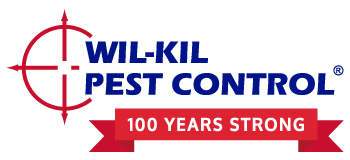
Remote Monitoring: Is It Right For You?
Remote monitoring technology for rodent management is generating a great deal of conversation among pest management professionals, third-party auditors and food industry quality and facility managers.
This shouldn’t come as a surprise, as the individuals who manage and are responsible for producing, storing, and shipping safe and nutritious food, are always open to ideas that can reduce the threat from rodents.
But is remote monitoring right for every account?
Shane McCoy, director of quality and technical training for Wil-Kil Pest Control, a Copesan Pest Solutions Partner, in Menomonee Falls, Wisc., says, in theory, the answer would be remote monitoring is a universal fit for commercial facilities, but there are qualifiers to that statement.
“Every facility is different and remote monitoring is not a cookie cutter, off-the-shelf solution,” says McCoy. “There are a number of variables that go into making the decision to deploy remote monitoring, and it is a conversation QA and facility managers need to have with their pest management provider.”
What should facility management and their pest service provider consider before making the decision to deploy this emerging technology?
• What types of food products are produced or stored at the facility?
• What is the structural condition of the facility? (i.e. new construction, older structures, structures with
unique design elements, etc.)
• Where is the facility located and does the location impact pest pressures?
• What are the client’s expectations?
• How are the facility’s current pest management programs and audits performing?
McCoy says food distribution and storage facilities may be more ideal candidates for remote monitoring technology
because of the “stability” they provide.
“We typically find less disruption and accidental movement of bait and trapping devices – which contribute to false alerts – in food distribution and storage facilities vs. food processing plants,” says McCoy. “There are fewer moving parts, less employee movement, less moisture and more stable temperatures and environmental conditions.”
McCoy adds that food distribution and storage facilities also tend to have lower rodent pressures, and thus fewer rodent captures. He also points out that food distribution and storage facilities that handle bagged or boxed finished goods rather than raw materials are more diligent in their storage practices (i.e. items are stored on shelves, away from walls, etc.). They also have a lower tolerance for spillage, and they are often newer constructions.
“The production and maintenance needs of a food processing plant – hosing down floors, extensive deep cleaning, forklifts moving materials – often lead to stations getting disrupted, damaged or even destroyed,” adds McCoy.
Making A Decision
When considering making the switch to remote monitoring it is important to remember that an effective rodent
management program is customized to the specific needs of the facility – not based on a rigid formula. “Clients need to sit down with their pest management service provider and take an honest look at whether remote monitoring is a good fit for the specific needs of their facility,” says McCoy. “The design of the program and the contracted services will be different, so expectations need to be set on both sides.”
The decision-making process needs to include:
- A thorough inspection to assess the current conditions in the facility that could potentially impact the effectiveness of remote monitoring.
- A review of historical data to identify potential pest trends that could have a bearing on the performance of a remote monitoring program.
- An understanding of how the facility is currently performing in second- and third-party audits and government inspections.
- An understanding of what the facility’s auditing agency (i.e. AIB, BRC, etc.) says about the use of remote monitoring, and determining if they are a proponent or have questions that need to be addressed.
- A clear understanding of the client’s budget and whether it allows for the initial start-up costs of converting from a traditional baiting monitoring system to remote monitoring.
- An honest discussion about what the client’s expectations of remote monitoring and their pest management partner are. Does the client expect an immediate response from a technician each time activity is reported, and can the pest management provider deliver this level of service at a price that is affordable?
On setting the proper expectations, McCoy cautions that remote monitoring alone will not prevent or eliminate rodents from entering a facility. “Remote monitoring is just one piece of a comprehensive rodent management program that includes exclusion, sanitation, cultural practices, and traditional baiting and trapping efforts,” adds McCoy.
In addition to enhancing a facility’s rodent management efforts, deploying remote monitoring can also support the
company and its brands’ mission to be technology adopters. “Many company’s mission statements include something about embracing technology to improve efficiencies, performance and product quality,” says McCoy. “Remote monitoring, with its potential to dramatically change the way rodent management is done, supports that quite well.”
What’s inside:
Download the PDF to learn:
- What industries remote monitoring serves best
- What factors should be considered before employing this technology
- Who should be involved in the decision making process


